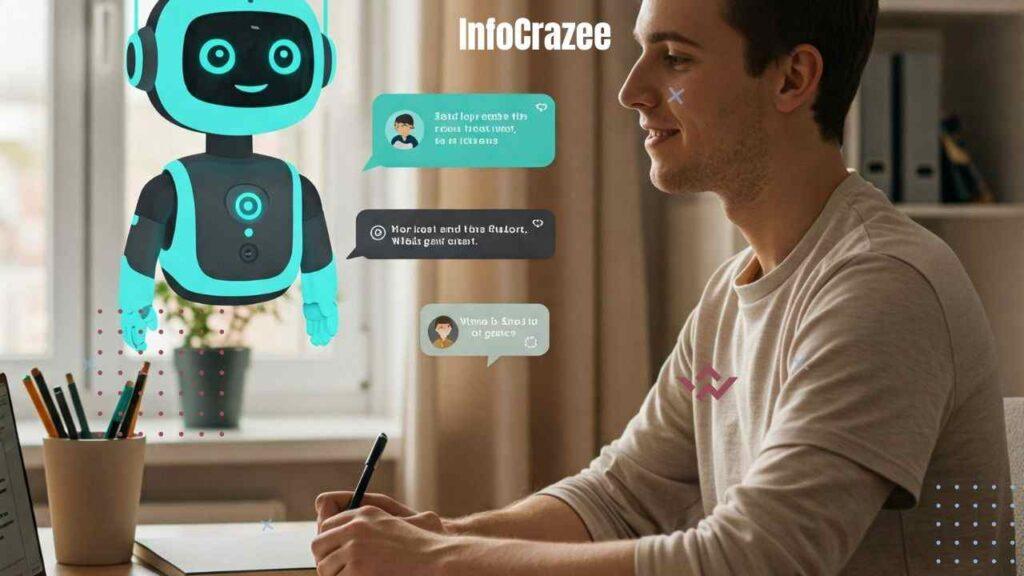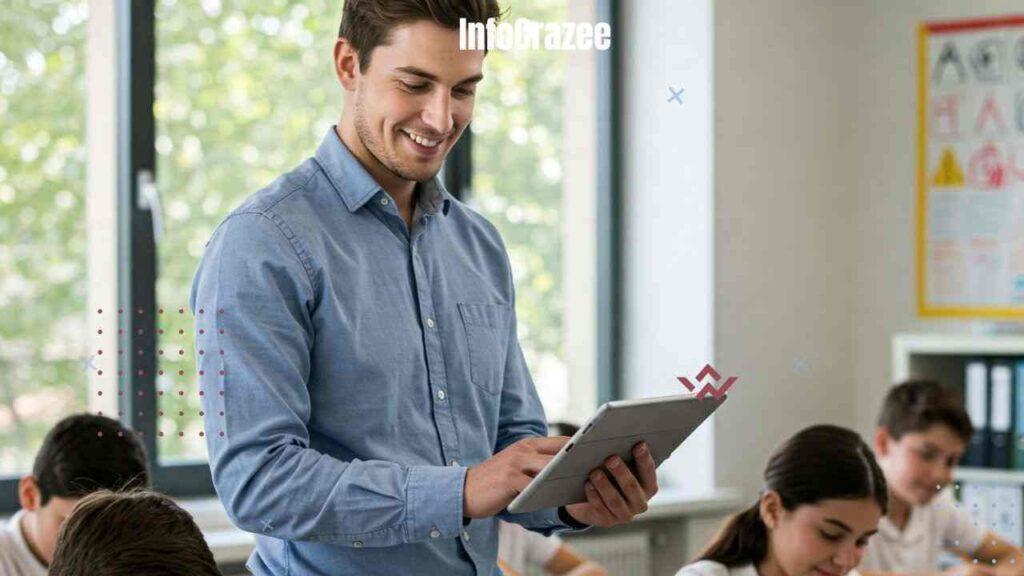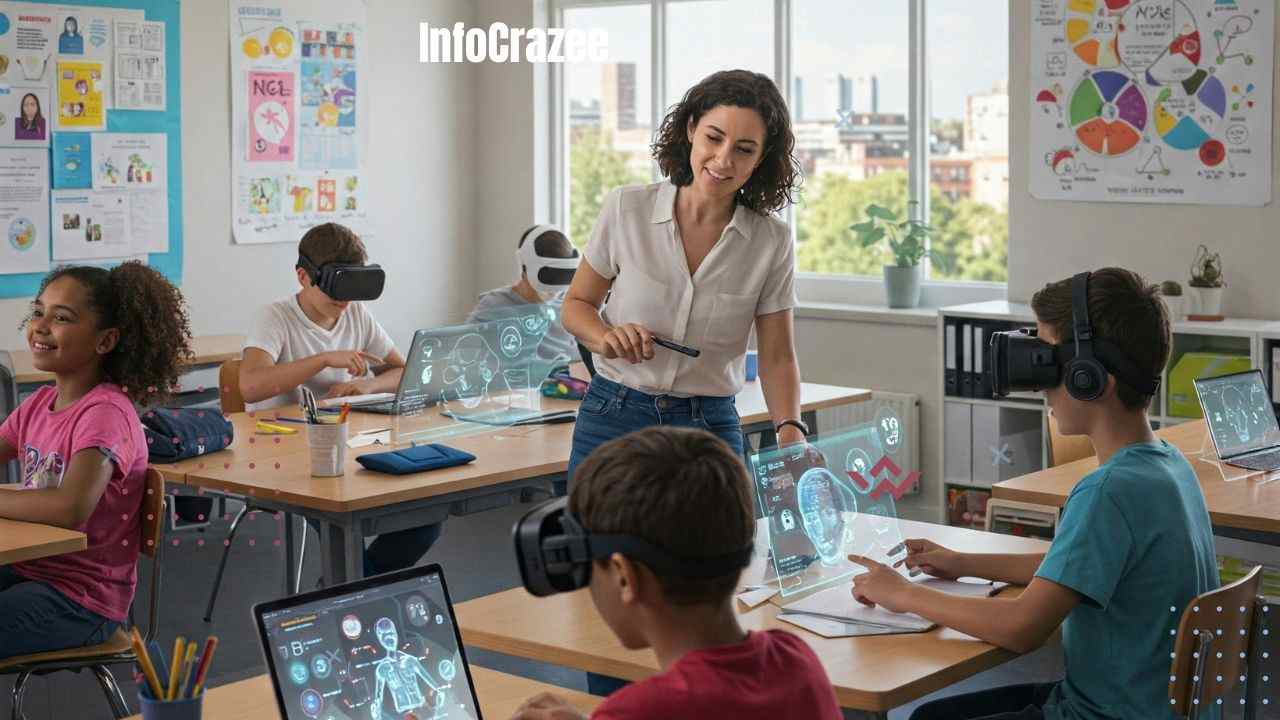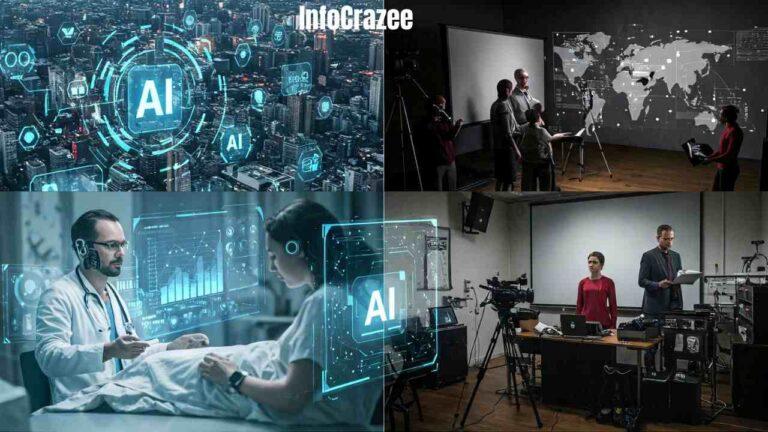AI in Education: How Smart Tech Is Changing the Way Students Learn
Not too long ago, classrooms were mostly about textbooks, chalkboards, and the occasional projector. Fast forward to today, and many schools are experimenting with Artificial Intelligence (AI)—from personalized lessons to AI tutors that never get tired.
So, what exactly is happening? And more importantly, how is AI making life better for students, teachers, and even parents?
Let’s explore how smart tech is changing the way we learn—one click, tap, or chatbot at a time.
What Is AI in Education, Really?
AI in education simply means using smart computer systems that can “learn” and improve over time to support teaching and learning. Think of it like a helpful assistant that can:
- Adjust lessons to match how fast (or slow) a student learns
- Answer questions anytime, even at 2 AM
- Help teachers with tasks like grading or lesson planning
It’s not about replacing teachers—it’s about giving them more time to teach and connect with students.
Personalized Learning: Not One-Size-Fits-All
One of the biggest ways AI is changing education is through personalized learning.
Every student learns at a different pace. Some grasp math quickly, while others are better with reading or creative tasks. AI tools can track how a student performs and then:
- Suggest practice based on weak areas
- Recommend easier or harder content as needed
- Offer instant feedback so students don’t get stuck
Real-World Example:
Khan Academy uses AI to help students master one concept before moving to the next. It’s like having a private tutor who knows exactly where you need help—and never loses patience.
Chatbots and Virtual Tutors: Help Anytime, Anywhere
Imagine you’re stuck on a math problem at night and there’s no one around to help. That’s where AI-powered chatbots and virtual tutors come in.

These bots are available 24/7 and can:
- Explain topics in simple steps
- Quiz students to test understanding
- Suggest additional resources like videos or exercises
Some even talk in a friendly tone and feel more like a helpful friend than a robot.
Smarter Classrooms for Teachers, Too
AI doesn’t just help students—it’s a game changer for teachers as well.

Teachers can use AI to:
- Grade assignments faster (especially multiple choice or short answers)
- Spot students who might be falling behind
- Get suggestions for lesson plans based on class needs
This means teachers spend less time on paperwork and more time actually teaching and connecting with their students.
Language Learning Becomes More Fun
AI-powered apps like Duolingo and Babbel have made learning new languages feel like a game. Here’s how:
- Speech recognition helps with pronunciation
- AI adapts the questions based on what you get right or wrong
- Progress tracking keeps learners motivated
And since it’s on your phone, you can practice Spanish or French while waiting for the bus!
Special Needs? AI Can Help Here Too
Not every student learns the same way. For students with learning disabilities or special needs, AI tools can provide custom support.
For example:
- Text-to-speech for students who struggle with reading
- Visual aids and interactive content for children with autism
- Voice commands for students who have difficulty typing or writing
It’s about giving every student an equal shot at learning and success.
Learning Analytics: Spotting Problems Before They Grow
AI tools can analyze tons of data quickly. This helps teachers and schools see patterns—like which students might need extra help, or which topics the whole class found confusing.
It’s like having a dashboard that lights up early warning signs before grades drop or frustration sets in.
The Human Side Still Matters
With all this talk of AI, it’s important to remember: technology doesn’t replace human connection.
Great teachers, curious students, and supportive parents will always be at the heart of education. AI is just the tool—the magic still happens through human relationships.
So, What’s Next?
In the next few years, we might see:
- AI teachers assisting in remote areas
- VR (Virtual Reality) classrooms powered by AI
- Homework that adjusts itself based on your mood and energy level
It sounds futuristic, but it’s already starting to happen—and the goal is to make learning more engaging, fair, and fun for everyone.
Final Thoughts
AI is not here to take over the classroom—it’s here to make it better. Whether it’s helping a shy student speak up, giving tired teachers a hand, or making homework feel less overwhelming, AI in education is about solving real problems in smart ways.
And honestly? That’s something worth getting excited about.
FAQs
Q1: Can AI replace teachers in the future?
A: No. AI can assist with tasks like grading and personalized lessons, but it can’t replace the empathy, creativity, and real-life guidance that human teachers provide.
Q2: Is AI in education safe for kids?
A: When used responsibly, yes. Schools and app creators must protect student data and ensure that AI tools are used ethically and with care.
Q3: How can parents support AI-based learning at home?
A: By exploring trusted apps with their kids, setting screen time limits, and encouraging balance between tech learning and hands-on experiences like reading or outdoor play.






